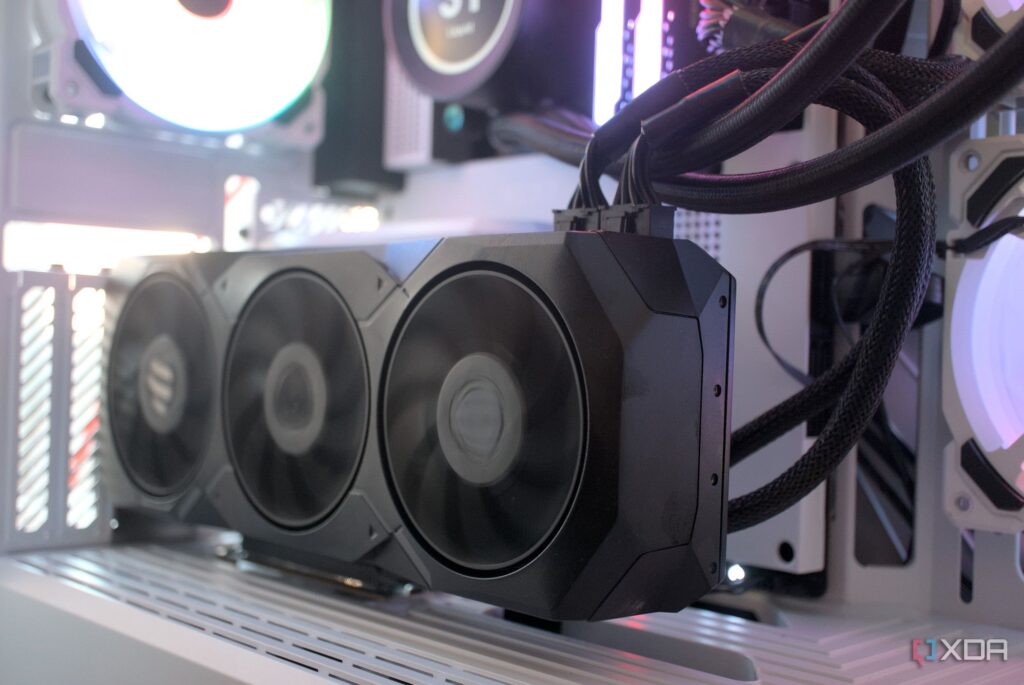
URGENT UPDATE: New reports indicate that vertically mounted graphics cards, while visually stunning, may lead to significant overheating issues. This development is crucial for gamers and power users who depend on optimal performance from their PCs.
As vertical GPU mounts gain popularity for their aesthetic appeal, the thermal constraints associated with this mounting style are becoming increasingly evident. Enthusiasts seeking to showcase their graphics cards through tempered glass panels must be cautious, as improper airflow can lead to overheating and thermal throttling.
Most universal vertical GPU mount kits push graphics cards closer to the case’s side panel, obstructing airflow. This design flaw compromises cooling efficiency, particularly for high-performance cards like the NVIDIA GeForce RTX 4080 and AMD Radeon RX 7900 XTX. As the cooling fans struggle to intake sufficient cool air, users may experience increased temperatures and reduced performance during intensive tasks.
Experts warn that the risk of thermal throttling is heightened for gamers engaged in prolonged gaming sessions or demanding workloads. One misstep in mounting could result in a temperature spike of 10-15°C, significantly impacting performance.
The issue is exacerbated by the airflow design of most PC cases, which are optimized for front-to-back or bottom-to-top airflow. A vertically mounted GPU disrupts this natural heat rise, creating a barrier that may prevent proper cooling for other components, such as the CPU and motherboard VRMs.
Notably, some modern cases, including the LianLi O11 series and Hyte Y60, are specifically designed to accommodate vertical GPU mounting while maintaining optimal airflow. However, many mid-tower cases still carry the risk of overheating when using aftermarket vertical mount kits.
Fortunately, there are solutions. High-quality vertical mounting kits, such as those from CableMod, allow for greater distance between the GPU and the side panel, improving airflow. Additionally, small form factor cases like the CoolerMaster NR200P are engineered to allow vertical mounting as a primary configuration, enabling GPUs to draw fresh air from outside the case.
As the community continues to explore vertical GPU setups, users are urged to assess their case design, cooling capabilities, and GPU specifications before making any modifications. The aesthetic upgrade can be achieved without sacrificing performance, provided the necessary precautions are taken.
Stay tuned for further updates on this developing situation, as the impact of vertical GPU mounting on performance could reshape PC building practices among enthusiasts and professionals alike.





